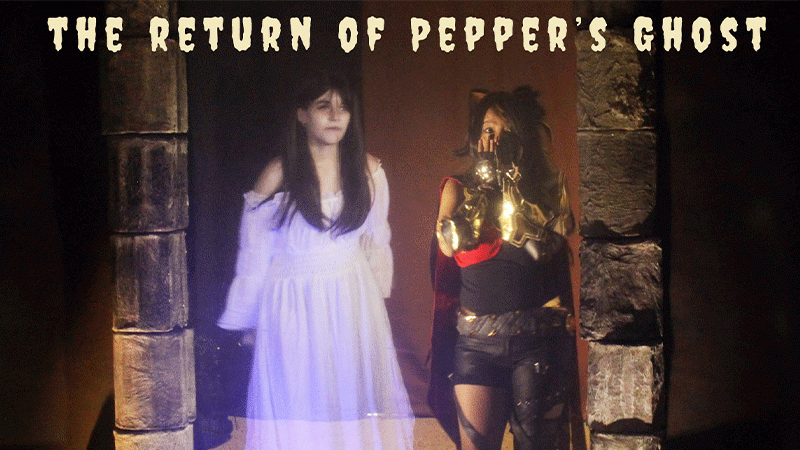For Halloween, a group of first-year Animation BA Honours students created a haunted mirror to revive Pepper’s Ghost, one of Westminster’s first directors, Professor Henry Pepper’s, magical illusions.

Professor Pepper first produced his Victorian ghost back in 1862, taking inspiration from engineer Henry Dircks, who devised a method of projecting an actor onto a stage using a sheet of glass and a clever use of lighting, calling the technique Dircksian Phantasmagoria. The actor would then have a ghost-like appearance while seemingly able to perform alongside other actors.
Pepper’s Ghost was originally staged at the University’s historic Regent Street Cinema and made its debut as part of a stage adaptation of a Christmas Eve theatrical production of the Charles Dickens novella, The Haunted Man and the Ghost's Bargain. It was so convincing that some audience members reportedly fled the theatre in fright.
Course Leader of Animation BA Honours Stephen Ryley said: “We had a great time re-creating this fascinating illusion. Unlike today’s two-dimensional stage holograms, Pepper’s version creates a truly three-dimensional apparition. Standing in front of our haunted mirror, you can even reach out and shake hands with the ghost! It was a fantastic Halloween treat.”
Student Julia Hawillo said: “We really enjoyed taking part in the project. It was a great way to explore how traditional techniques laid the foundation for today’s special effects.”
Student Ritika Gurung added: “I had no idea what Pepper's Ghost illusion originally was. But once I saw the effect in real-time, it was quite interesting to see how special effects could be created with such simple objects. And the most impressive part was how convincing the effects looked.”
Student Kaneda Dawson added: “I really enjoyed taking part in the Pepper’s Ghost activity. It was fascinating to learn about the history of the illusion and how such an inventive technique from the Victorian era continues to inspire modern special effects.”
The hands-on haunted mirror project directly contributes to the United Nations Sustainable Development Goal (SDG) 4: Quality Education. Since 2019, the University of Westminster has used the SDGs holistically to frame strategic decisions to help students and colleagues fulfil their potential and contribute to a more sustainable, equitable and healthier society.
Learn more about Art, Design and Visual Culture courses at the University of Westminster.






